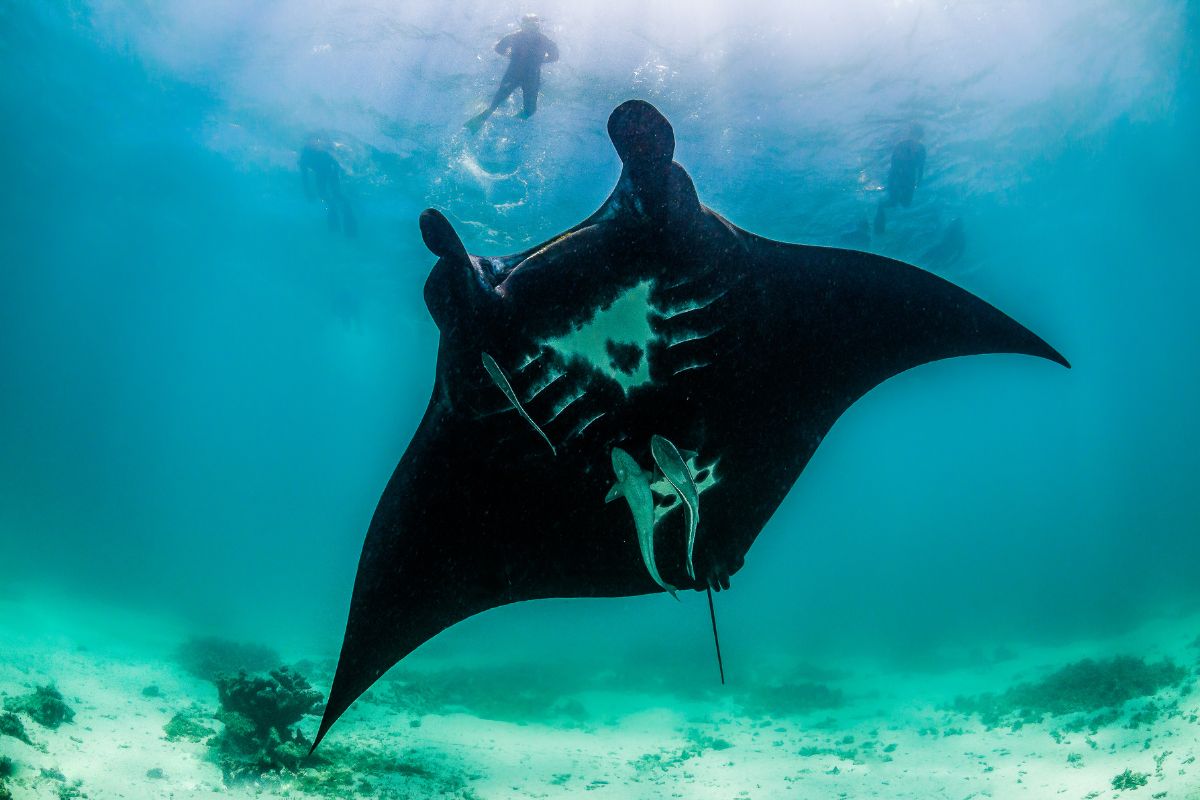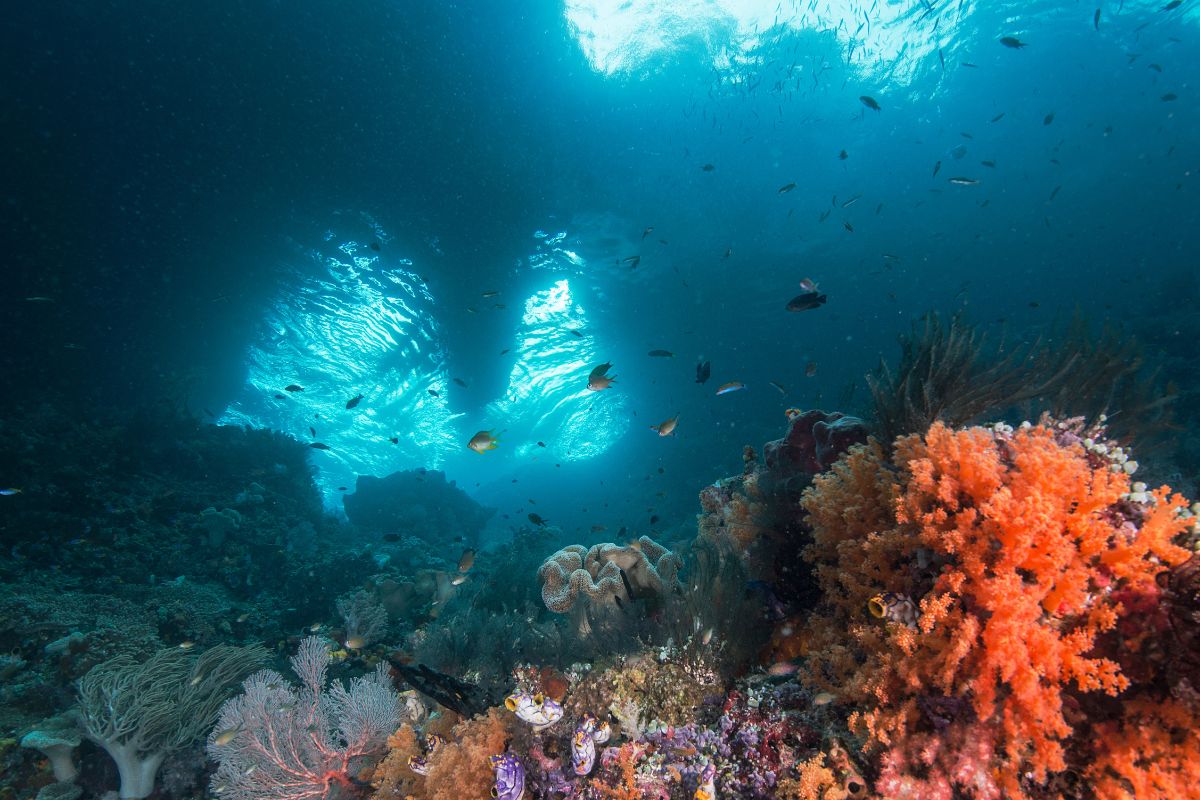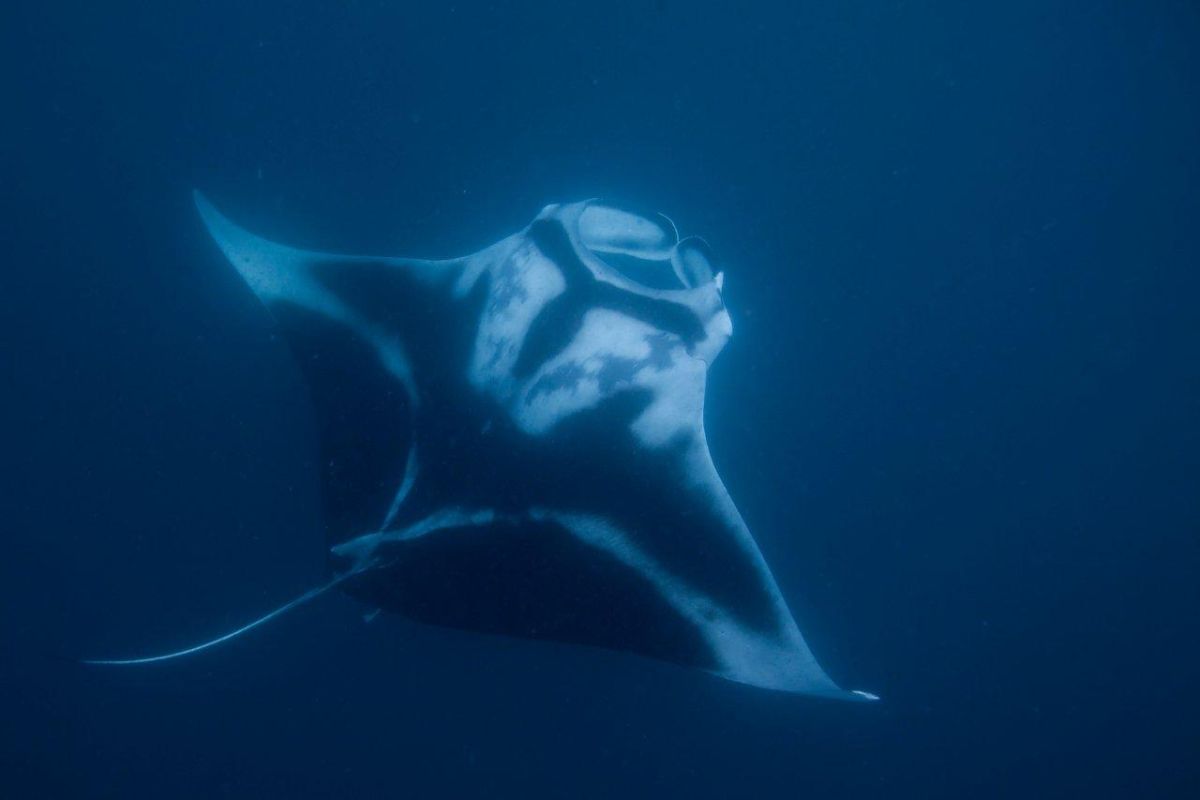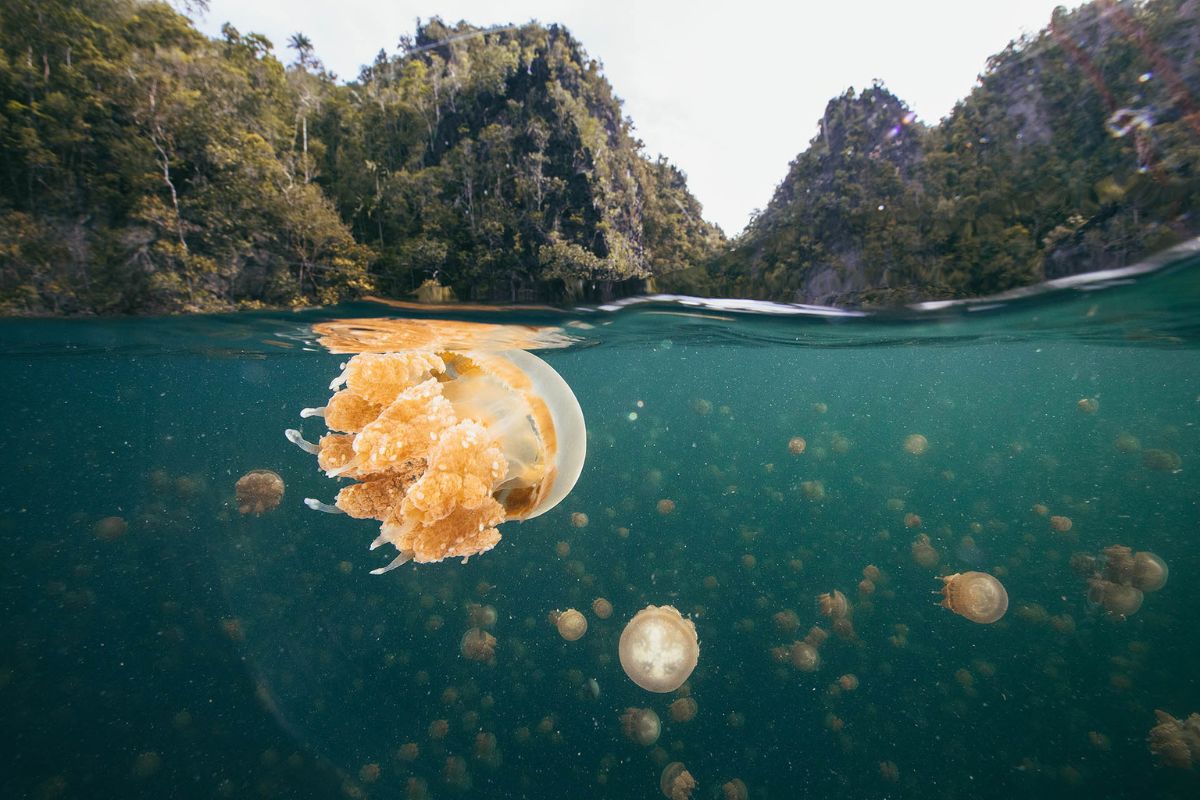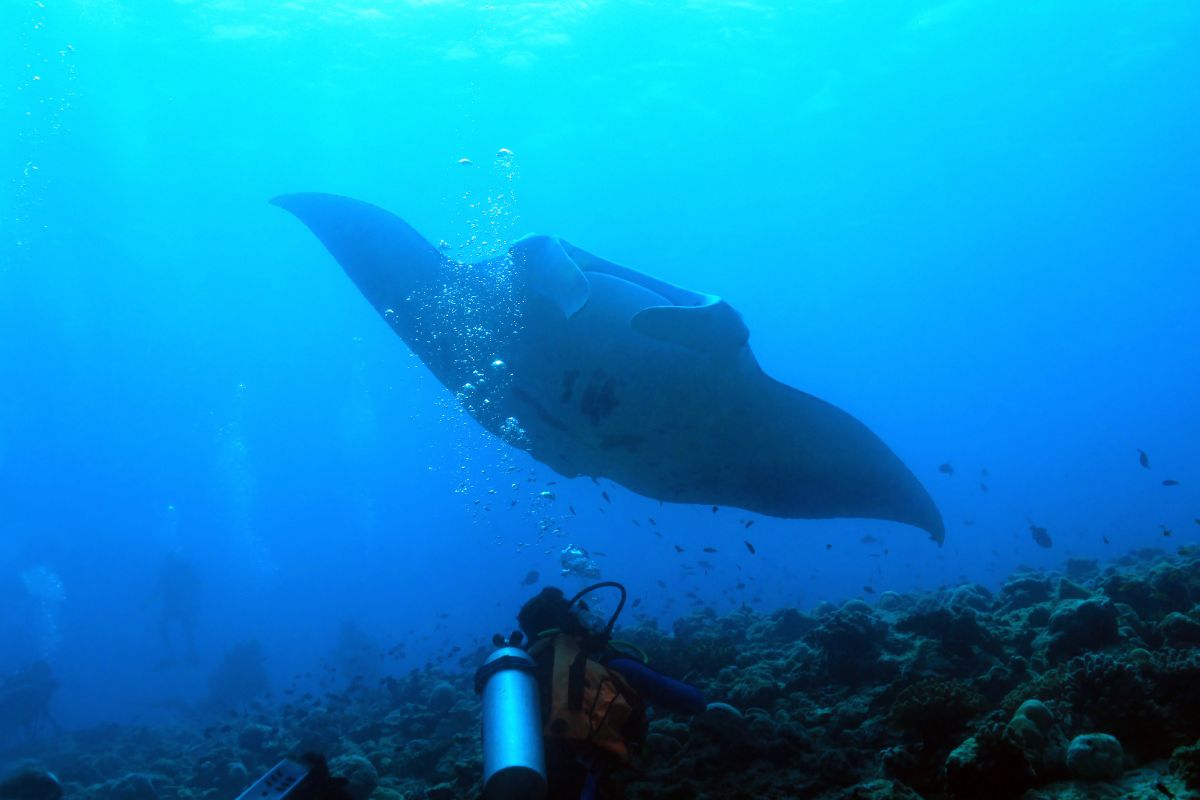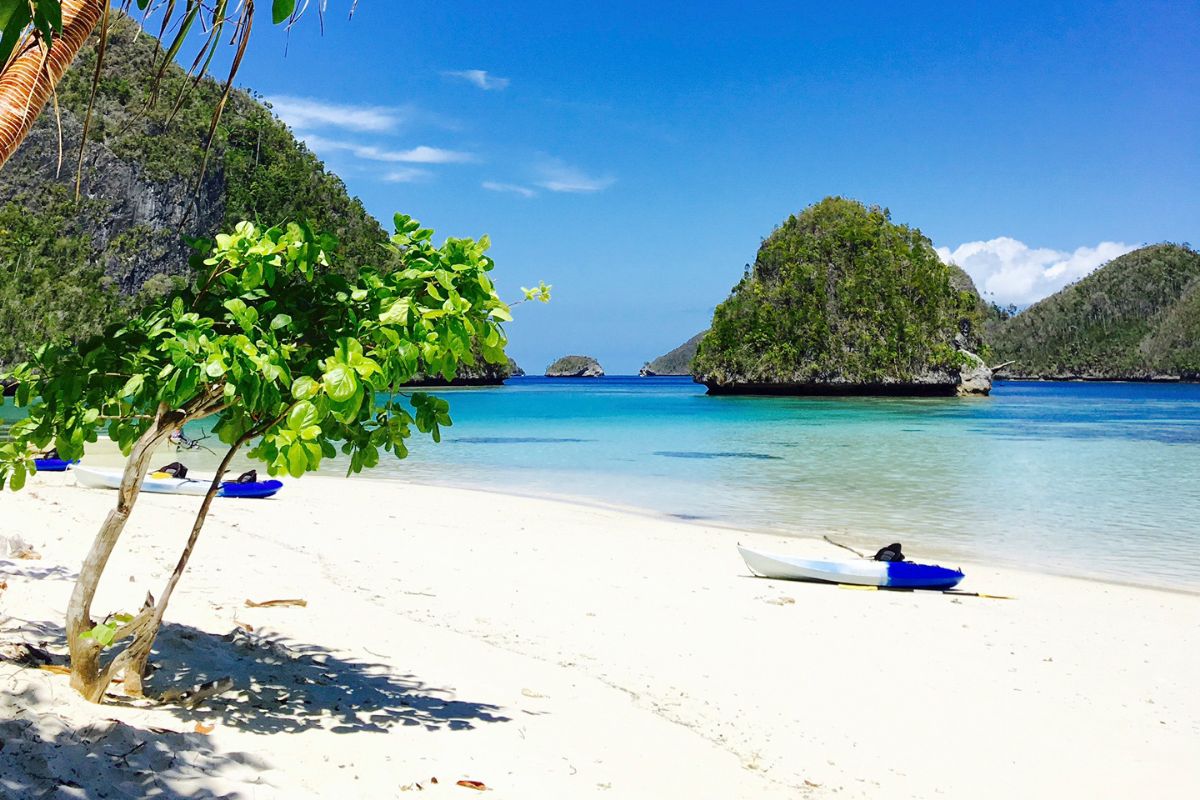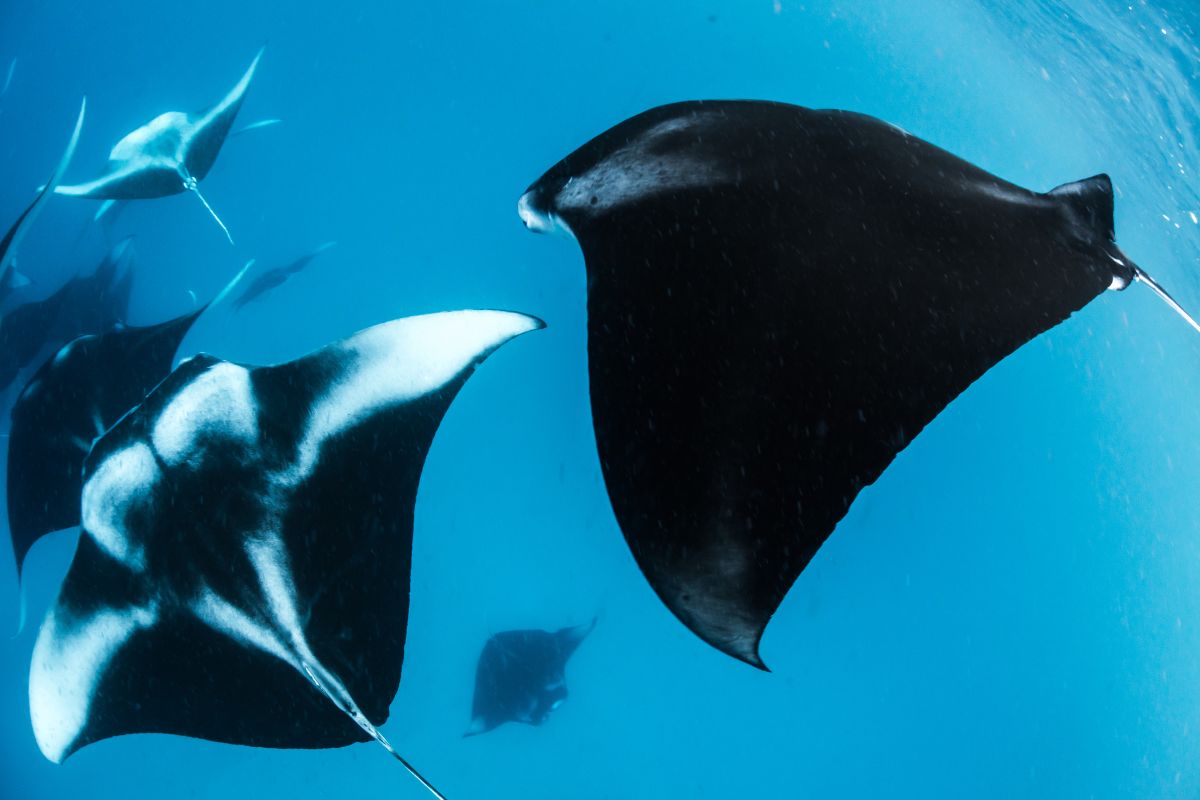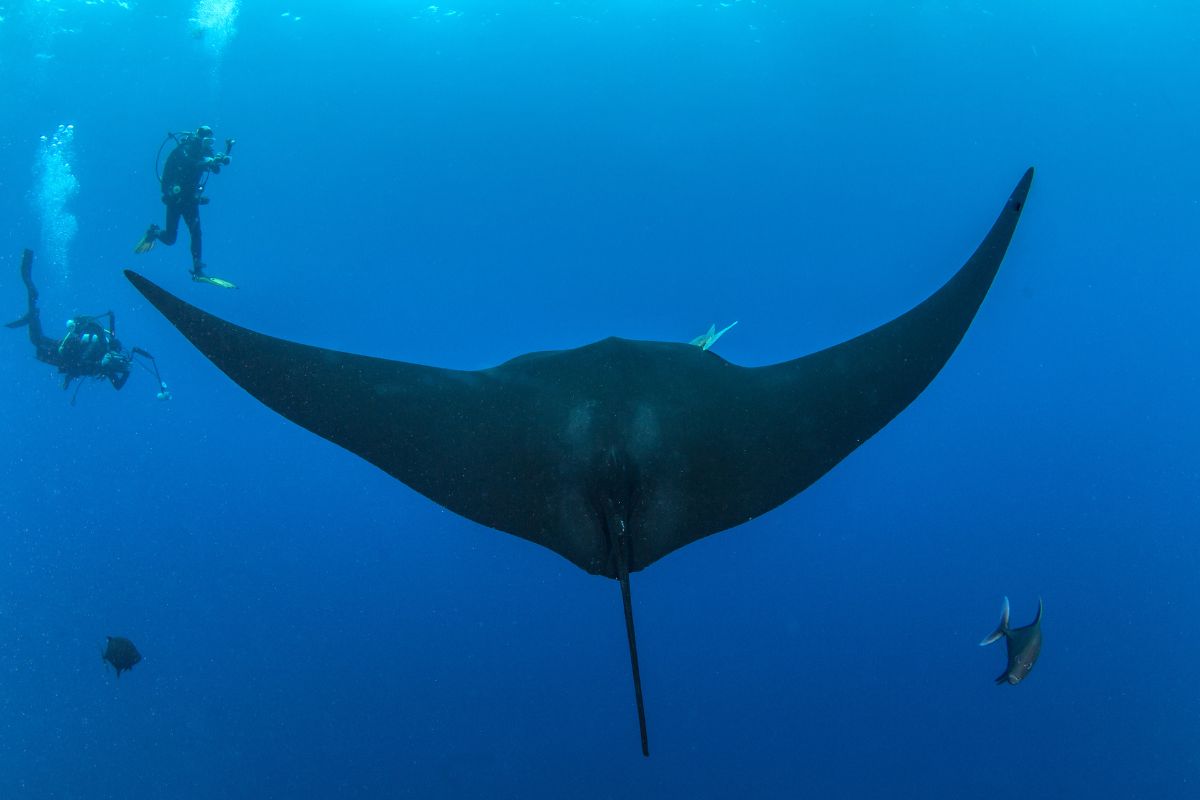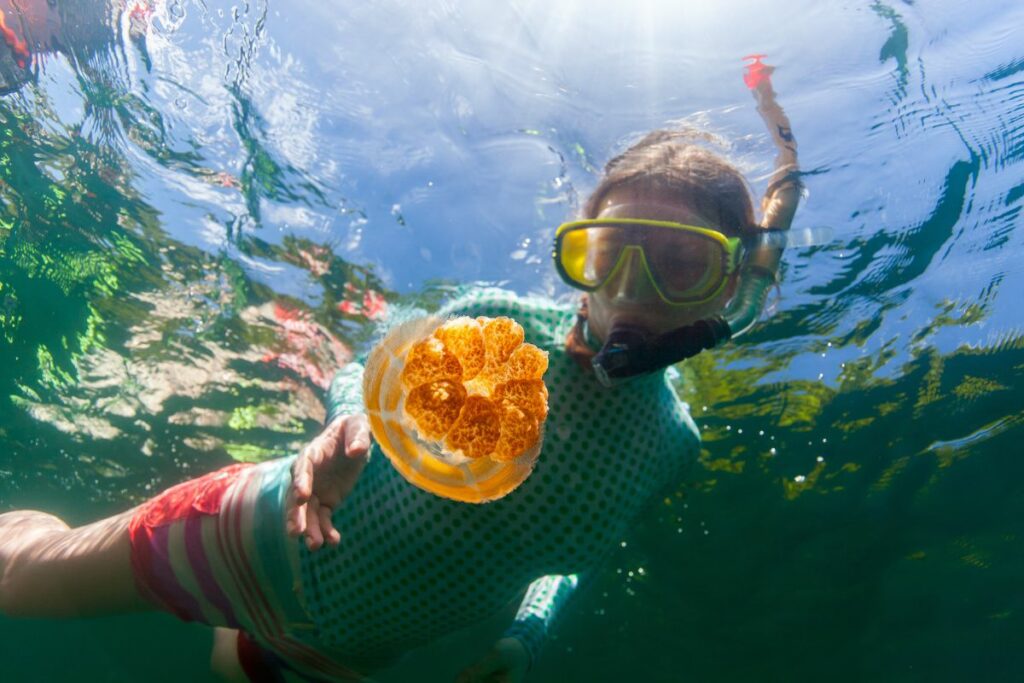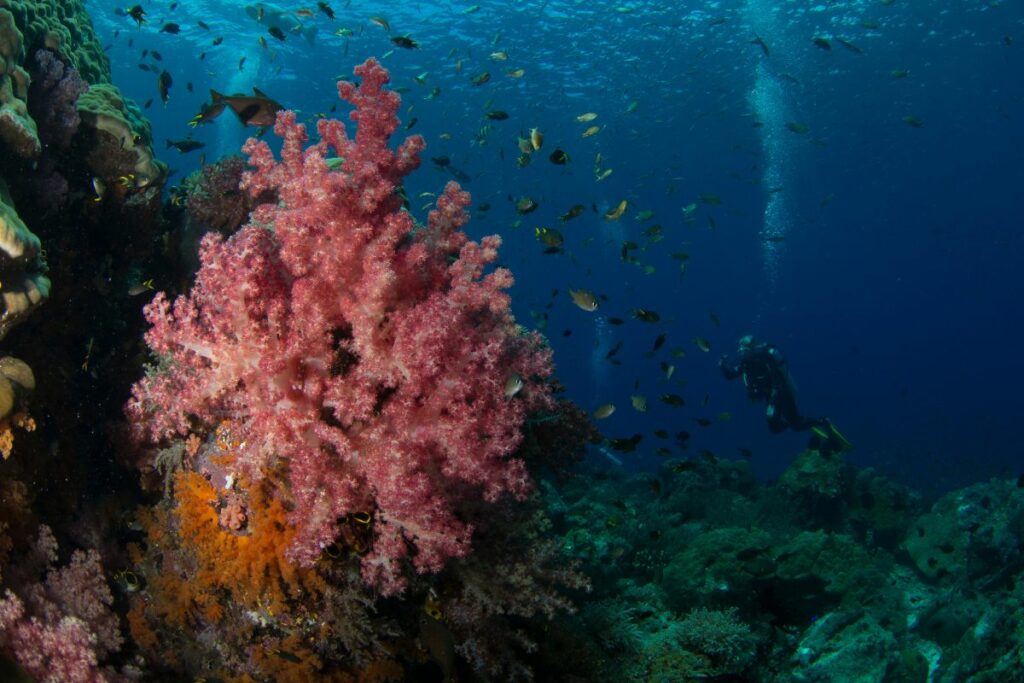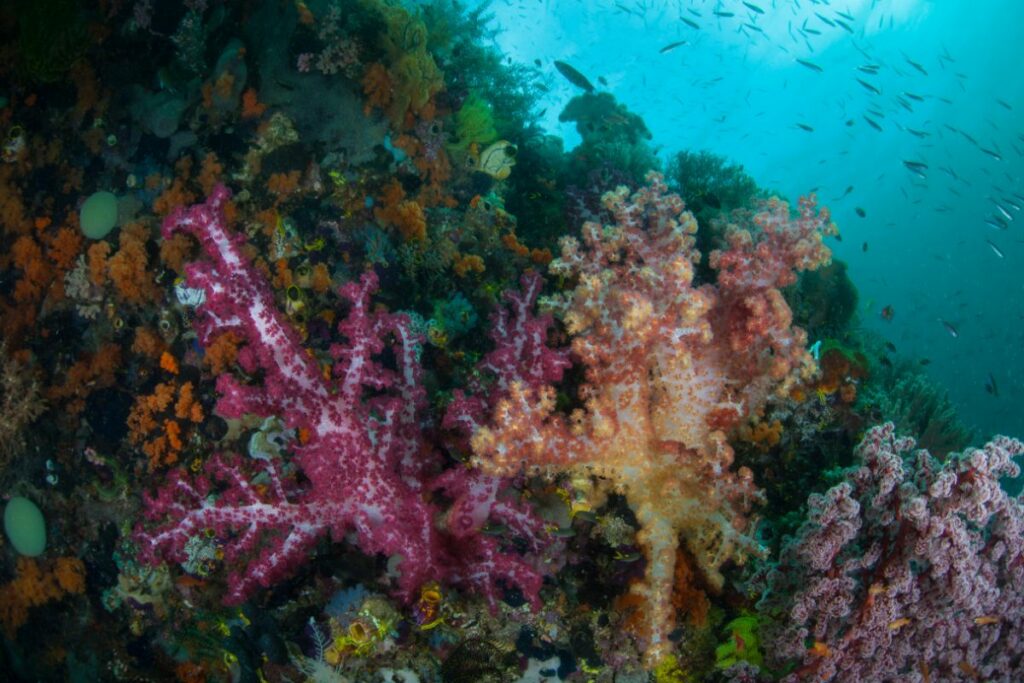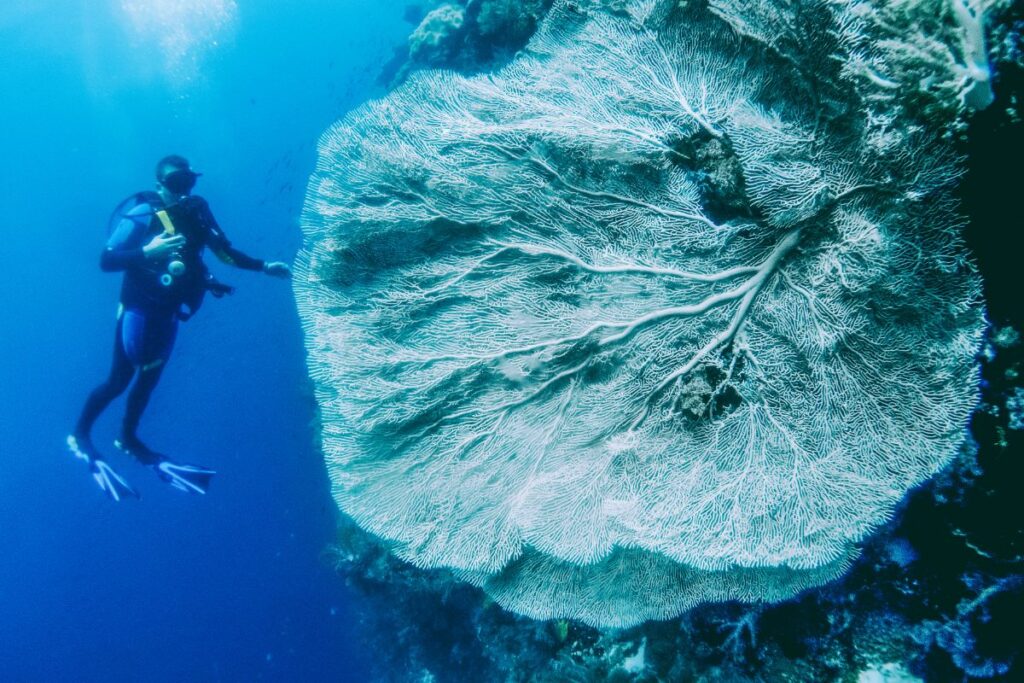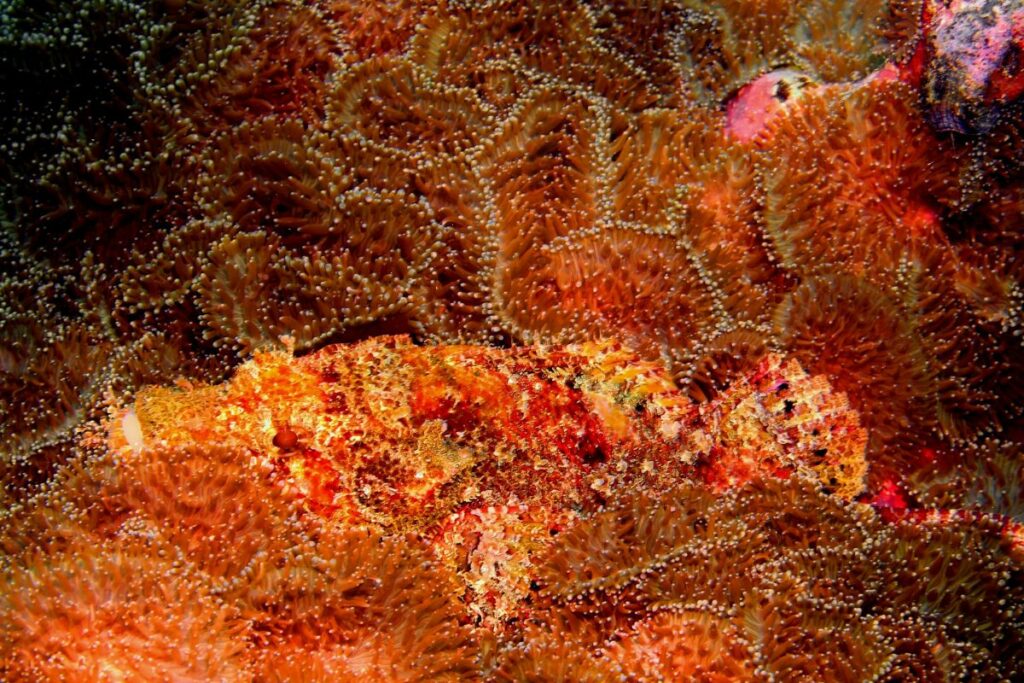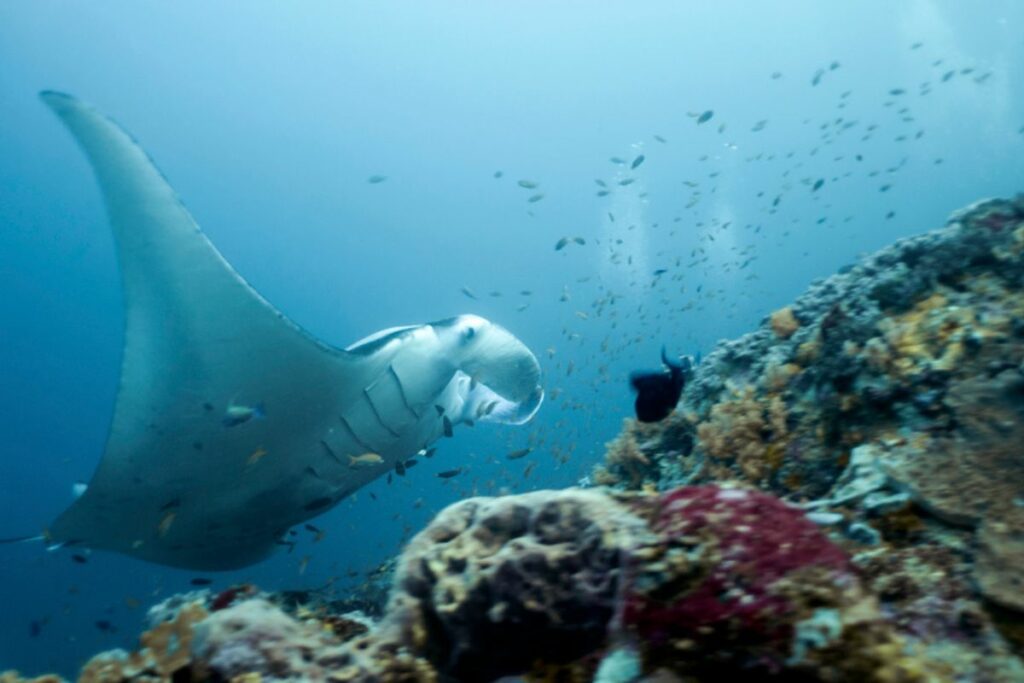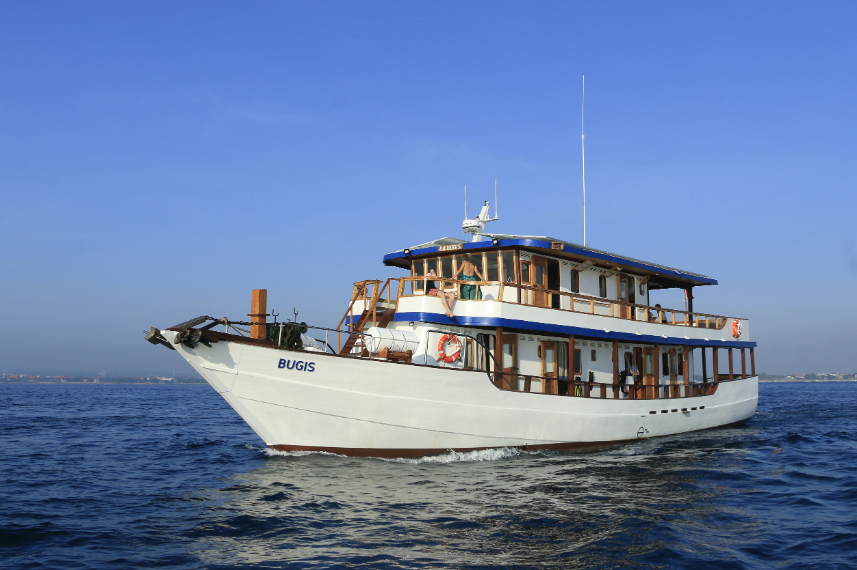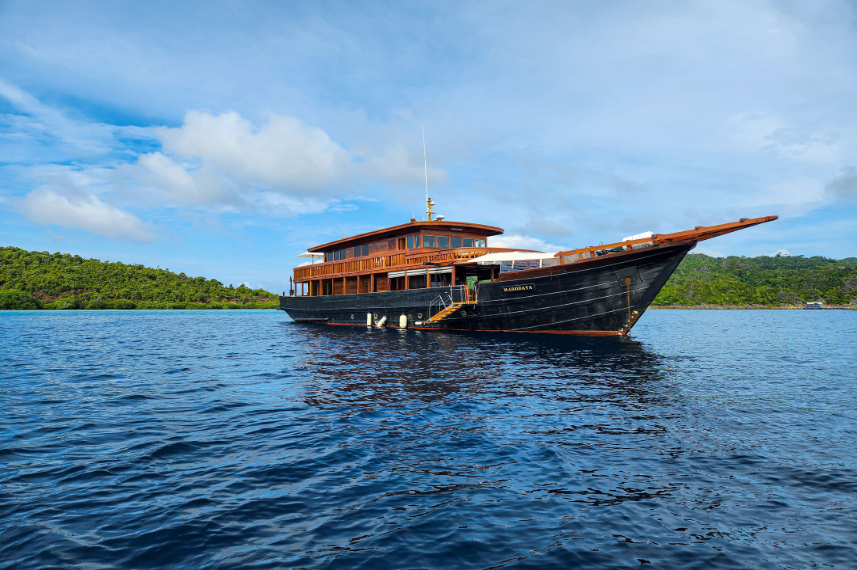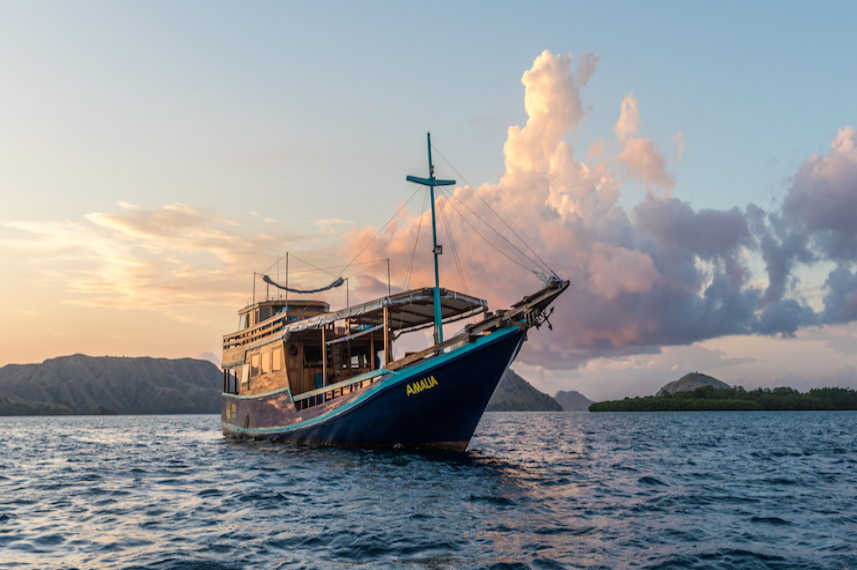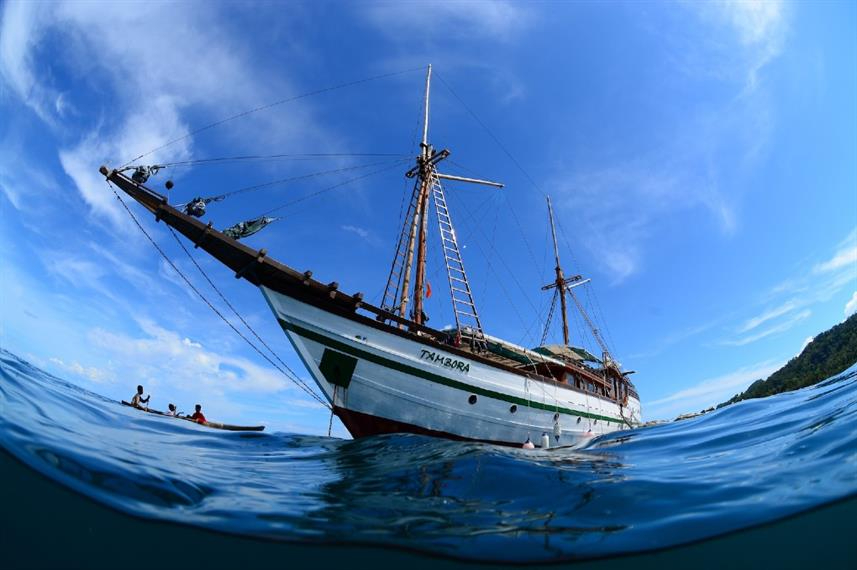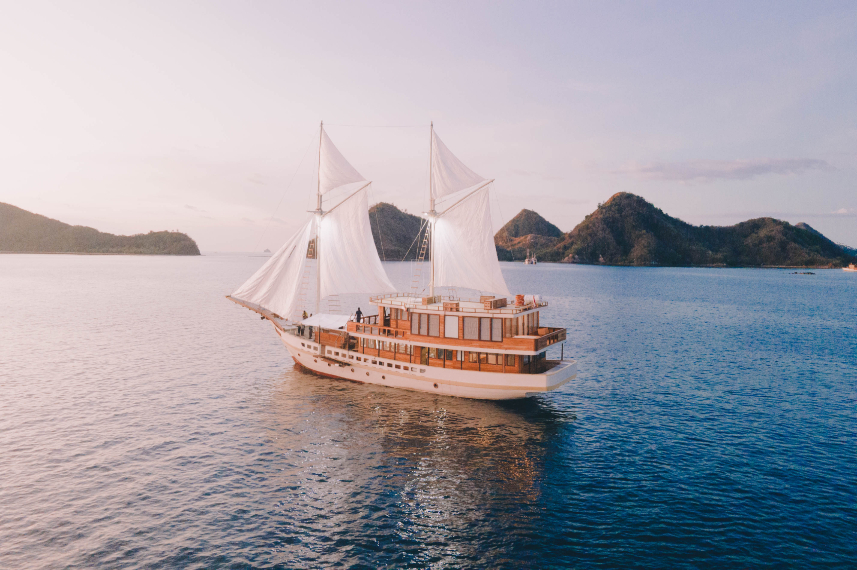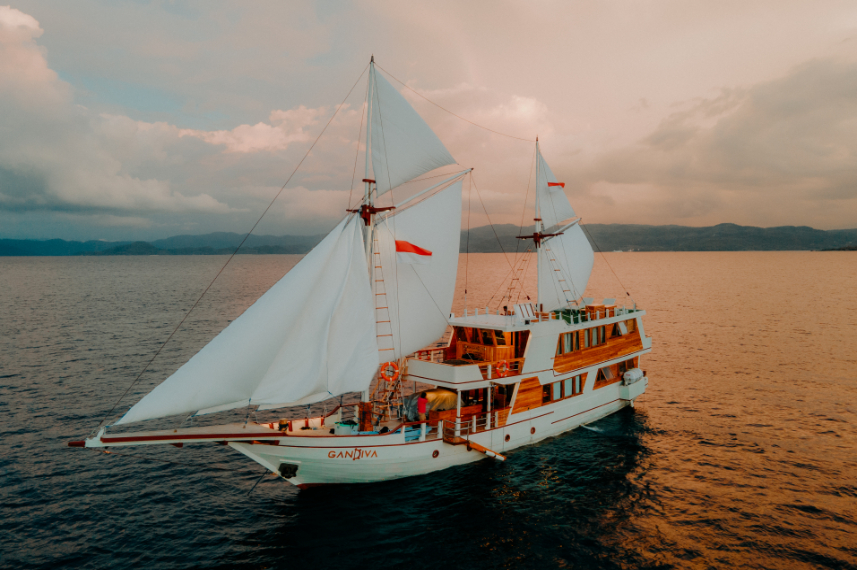Misool
Located in the south of Raja Ampat and the heart of Coral Triangle lies one of the largest of four islands called Misool. Consisting of small islets with a fascinating underwater paradise, Misool is worth exploring as a standalone destination. Misool contributes significantly to 1,600 fish species recorded in Raja Ampat, and many are endemic to the Misool area.
The healthy coral reef condition in Misool Islands—coral disease and bleaching are recorded under 1%—is due to several factors. One reason is that the region is protected as a ‘No-Take- Zone,’ which means no fishing is allowed, covering 828 square kilometers. The other reason is that Misool is bordered by the Seram Sea, which means the nutrients in the deep waters are part of the Indonesian throughflow to the Banda Sea.
Dedicating a separate trip to Misool is worthwhile as it will give you the opportunity to explore the beauty of this fraction of Raja Ampat.
Top highlights of Misool
- Explore the three saltwater lakes in Misool and swim with the stingless jellyfish in Lenmakana, Karawapop, and Keramat.
- Observe and dive along oceanic manta rays and reef manta rays in Magic Mountain.
- Admire the underwater limestone rocks formation in Boo Windows/Boo Rocks for one of the most magnificent dives in Misool.
- Hop from one islet to another to enjoy the sandy white and pristine beaches in the region.
About Misool
As part of the island forming the famous Raja Ampat, Misool is located in the Southwest Papua province, with most of the region consisting of the lowlands except the south part, which is mountainous and hilly, with the highest peak reaching up to 990 meters.
The enticing beauty of Misool does not only lie under the surface but above the surface as well.
The main island is inhabited by Papuan tribes who speak Biga, Matbat, and Ma’ya languages aside from Indonesian, with a population of less than 10,000 people divided into 15 villages. Scattered around the island are numerous caves with petroglyphs on the wall, dating back to 5,000 years.
Because Misool is geographically surrounded by sea, the border with Seram Sea provides the waters around the island with access for large animals to pass, like whales.
Diving in Misool
Like any other dive site in Raja Ampat, Misool is no different. It displays the remarkable marine biodiversity expected from the Last Paradise on Earth.
The colorful corals, especially the soft corals in the region, are extraordinary. Coral bommies, gorgonian sea fans, and tunicates are carpeting the walls and the sea floors of Misool. Various species of fish, from triggerfish, sweetlips, pipefish, pufferfish, angelfish, butterflyfish, horse-eyed jacks, snappers, and fusiliers to big fish like oceanic and reef manta, sharks, dugongs, and even whales can be seen roaming the area. Pygmy seahorses, nudibranchs, octopuses, and turtles create another remarkable addition to the variety in the region. Some sites are even protected as the hawksbill and green turtle nest.
Do not count out some endemic species you can only encounter here in Misool, such as Misool rainbowfish, Nursalim’s flasher wrasse, Jamal’s dottyback, and epaulette sharks.
Due to its protected nature, in 2012, it was reported that there were 25 times more sharks inside the Misool Marine Reserve than outside. In 2019, marine scientists recorded 388 fish species in a single dive north of Misool. Those species include shrimp gobies, the stargazer (Uranoscopus sulphureus), the triplefin (Helcogramma rhinoceros), and ghost pipefish.
Discover your next adventure in
The Magical Manta Rays Gliding Across Magic Mountain
Having world-class dive sites in Raja Ampat is both a curse and a blessing. It becomes a blessing because the choice is limitless, and each dive site offers a different experience. But it becomes a curse because the vast area covering Raja Ampat makes it impossible to dive in every spot.
There is a site called Magic Mountain, which should be on every diver’s wish list. The area is unique because of manta rays. And no, it is not the usual reef manta only, but also the oceanic manta rays. On top of that, the chance to encounter black manta rays is also worth mentioning.
Mobula birostris and Mobula alfredi often use the region as a cleaning station, meaning they let small fishes clean off their bodies from the parasites. This ritual is unique because not every dive site has this spectacle.
Aside from functioning as a cleaning station, you will also encounter the black manta rays. These melanistic manta rays are only found in Raja Ampat and Ecuador, with 40% of the ray population in Raja Ampat being black manta rays. A worthy dive!
Diving Environments in Misool
The topography in Misool can only be described as varied. The mix of coral reefs, pinnacles, caves, drop-offs, and walls decorated the region. The depth of this topography ranges from 2 to 30 meters, with visibility on a sunny day and clear weather reaching up to more than 25 meters.
The water temperature in Misool is constant in the bracket of 26 to 30 degrees Celsius all year. If the water temperature rarely falls below 26 degrees Celsius, the same thing cannot be said about the current. Some dive sites can have significantly strong currents, so only experienced divers can enter the water.
Please follow the advice from the local dive operators as they are more familiar with the water conditions in Misool, and also to ensure your diving experience is memorable and safe.
Discover your next adventure in
How to get to Misool
As the second-largest island in Raja Ampat, Misool is not easily accessible by public transportation. Here are two ways you can reach this remote part of Raja Ampat.
By plane
The entry point to Misool is through Sorong. Big cities like Jakarta, Makassar, and Surabaya offer flights to Sorong. Once you arrive, the real adventure begins. You need to take a ferry to Misool, and it can take up to 9 hours if you use a slow boat. Express ferry is available, and it takes around 5 hours to reach Misool.
Pay attention to the ferry schedule, as the weather plays a significant role in whether the ferry is leaving the port.
By Liveaboard
The only reasonable way to reach most of the sites in Misool is by liveaboard. The trip to Misool usually takes overnight journeys, and the service is often combined with the Raja Ampat exploration.
Choosing the liveaboard means you can go to even the most remote corners of Misool that are otherwise not accessible by public ferry or boat.
Diving Seasons & Weather in Misool
Though on paper, diving in Misool can be done all year long, October to April proved to be the best months to explore the underwater paradise of Misool. Generally, the weather during these months is clear, and the sea is at its calmest condition, though occasional rain occurs.
Outside those months, especially between July and September, the sea is choppy with heavy rain as the area in Raja Ampat enters the wet season. The situation is not ideal for diving because the current can be powerful, and the visibility is limited.


